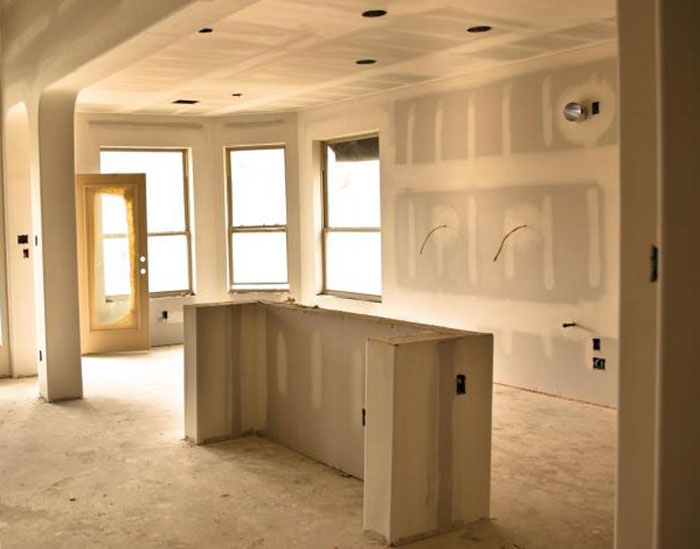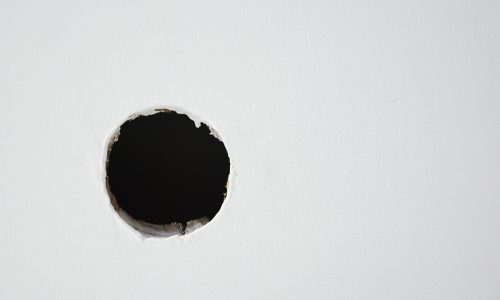Upgrade your interiors using Drywall Repair Ogden UT and creative painting styles.
Discover the Best Practices for Effective Drywall Fixing and Installation
The art of drywall fixing and installment needs a blend of skill and accuracy. Grasping the important devices is important for attaining a seamless coating. Comprehending the step-by-step process can make a significant difference in the outcome. Appropriate strategies for taping and mudding are also vital. What continues to be is the expertise of upkeep that assures long life. These components with each other produce a sleek outcome worth checking out better.

Essential Devices for Drywall Repair and Installment
When undertaking drywall repair and setup, having the right devices can greatly boost the performance and quality of the work. An energy knife is essential for cutting drywall sheets precisely, while a drywall saw can assist in making much more intricate cuts. Taping blades, offered in different sizes, are essential for using joint compound efficiently and uniformly. A drywall sander, preferably with a dust collection attribute, helps achieve a sleek finish, minimizing the need for extensive clean-up.
Furthermore, a measuring tape assurances exact measurements, and a degree guarantees that setups are straight and plumb. Safety and security equipment, consisting of dirt masks and safety glasses, ought to not be neglected to secure versus debris and dirt. Finally, a stud finder help in locating mounting members, ensuring safe installment. By equipping oneself with these important devices, the repair work and installment process comes to be more workable and leads to a professional-quality end result.

Step-by-Step Overview to Patching Holes
Covering holes in drywall needs an organized technique to ensure a seamless fixing. The location around the hole must be cleaned and any loosened particles got rid of. For small holes, a putty blade can be made use of to use a light-weight spackle, pushing it right into the opening and smoothing the surface area. After it dries out, sanding is important to create a flat surface. For bigger openings, a spot of drywall might be needed. This involves cutting an item of drywall a little bigger than the opening, safeguarding it to the wall with screws, and making use of joint compound to cover the joints. As soon as the compound dries out, it needs to be sanded smooth. Priming the patched area prior to painting will certainly ensure an even coating. Complying with these actions will certainly lead to a professional-looking repair work that mixes effortlessly with the surrounding wall surface.
Techniques for Seamless Drywall Installation
Attaining smooth drywall installment demands cautious preparation and execution. It is essential to gauge and reduce drywall sheets precisely to lessen spaces. Making use of an utility knife, installers ought to rack up the board prior to breaking it along the cut line, ensuring clean edges. Appropriately straightening the sheets is vital; beginning with the top and working down assists preserve harmony.
Attaching drywall to the studs calls for consistent spacing, usually every 16 inches, making use of screws instead of nails for much better hold. This technique lowers the threat of pops with time. Furthermore, staggering the seams between sheets enhances structural integrity and reduces the visibility of joints.
Lastly, using the ideal thickness of drywall for certain locations-- such as moisture-resistant types in shower rooms-- additional adds to a remarkable finish. Complying with these methods will certainly cause a professional-looking and smooth setup, setting the phase for the subsequent ending up procedures.
Finishing Touches: Insulation and Mudding
Completing touches, such as taping and mudding, play a necessary function in achieving a polished drywall surface. Insulation includes using a slim strip of drywall tape over the joints and joints, ensuring a smooth look. This procedure helps protect against fractures and creates a strong bond between drywall sheets. It is essential to pick the right kind of tape, with paper and fiberglass fit together being one of the most typical options.
Mudding, or using joint compound, follows insulation. This substance completes spaces and ravel the surface area for an uniform coating. It is typically used in multiple layers, with each layer needing to dry before fining sand. Appropriate strategy involves feathering the sides to blend the compound into the bordering drywall, reducing presence.
When completed appropriately, taping and mudding boost both the visual and architectural honesty of the drywall installment, leading to a professional-quality surface.
Tips for Maintaining Your Drywall After Installment

In addition, maintaining a regular indoor humidity degree can stop warping or mold development. Utilizing a dehumidifier in wet areas, like cellars, is recommended. It's also useful to periodically repaint locations that show wear, as this secures the underlying material. When relocating furniture or setting up components, caution ought to be worked out to avoid damaging the drywall. By complying with these upkeep pointers, home owners can extend the life of their drywall, securing it continues to be an appealing attribute of their insides.
Frequently Asked Concerns
What Safety Gear Is Required for Drywall Fixing and Installment?
For drywall repair work and setup, essential safety gear includes safety and security goggles to secure eyes, dirt masks to avoid breathing of fragments, handwear covers for hand protection, and knee pads for comfort during extended kneeling. drywall contractors.
Exactly how Do I Determine the Drywall Thickness Needed for My Project?
To determine the drywall thickness needed for a project, one ought to think about the wall's structural requirements, neighborhood structure codes, and the intended use the space, generally choosing for 1/2-inch or 5/8-inch drywall.
Can I Fix Drywall Without Removing Furnishings From the Room?
Yes, drywall can be fixed without eliminating furnishings from the area. Cautious preparation and protective steps can minimize mess, enabling effective repairs while maintaining surrounding things safe from dust and damages throughout the process.
What Sorts of Drywall Are Ideal for Various Atmospheres?
Moisture-resistant drywall is perfect for restrooms and kitchen areas, while soundproof drywall matches shared wall surfaces in apartment or condos. Fire-rated drywall is best for garages, more info and conventional drywall functions well in general living areas, guaranteeing longevity and viability for different environments.
The length of time Does It Take for Drywall Mud to Dry Entirely?
Drywall mud commonly takes 24 to 48 hours to completely dry totally, depending upon aspects like moisture and temperature level (drywall contractors). Thicker applications may require longer drying times, while thinner layers can dry out a lot more quickly. Correct ventilation aids drying out
The art of drywall repair work and installment requires a mix of skill and precision. When taking on drywall fixing and installation, having the right tools can considerably enhance the efficiency and high quality of the work. An energy blade is crucial for cutting drywall sheets exactly, while a drywall saw can aid in making much more intricate cuts. Accomplishing smooth drywall installation demands cautious preparation and execution. Moisture-resistant drywall is suitable for bathrooms and kitchen areas, while soundproof drywall suits shared wall surfaces in apartments.